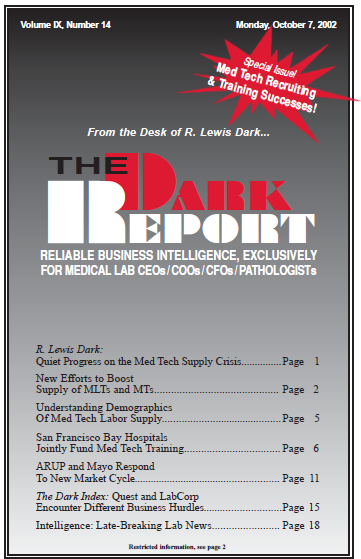CEO SUMMARY: Most laboratorians are acutely aware that the nation’s pool of trained medical technicians and medical technologists is shrinking even as growing numbers of baby-boomer lab techs approach retirement. Meanwhile, training programs are feeding inadequate numbers of new med techs into the system. To rectify this situation, lab directors are actively working to bring …
New Efforts to Boost Supply of MTs & MLTs Read More »
To access this post, you must purchase The Dark Report.


